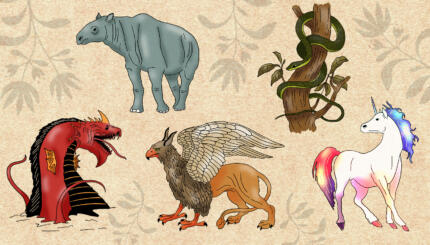Commentary on Parashat Tzav, Leviticus 6:1-8:36
Like other portions, the title of this portion teaches us something about what is to follow. Tzav, command–not a suggestion nor even a request. It is a command, something with which we are generally only familiar in the context of the Torah (as mitzvot) or perhaps in the armed services.
In Tzav, this command is directly related to the giving of sacrifices. But it is not a command to do sacrifices. Rather, the text tells us that God speaks to Moses and tells him that if the Israelites are going to make sacrifices–as the ancient way of coming close to God–then they have to undertake these sacrifices in a specific way. There is little flexibility offered. The portion–and much of the book of Leviticus–outlines these specifics. This is not simply a case of “God is in the details,” but rather, “a relationship with God is in the details.”
Yet we know that significant evolution over time took place with the various prayers and rituals that replaced the ancient sacrificial system as the means to develop and maintain a relationship with the Divine. Similarly, our relationship with God–as the Jewish people and as individuals– developed over time. So why does the text read as if there is a constancy?
The Fire of Sacrifices
The constancy is in the relationship and the fire (which I also read as symbolic of passion) that accompanies the sacrifices, not in the vehicles themselves (the sacrifices) used to initiate or maintain the relationship. And how do we know this? The text tells us, as well: “The fire on the altar shall be kindled with it; it shall not go out. The priest shall burn logs upon it each and every morning and arrange the burnt-offering on it and burn upon it the fats of the peace-offering. A continual fire shall be lit on the altar; it shall not go out.” (Leviticus 6:5-6)

Help us keep Jewish knowledge accessible to millions of people around the world.
Your donation to My Jewish Learning fuels endless journeys of Jewish discovery. With your help, My Jewish Learning can continue to provide nonstop opportunities for learning, connection and growth.
Obviously, this is translated into the ner tamid, the eternal light that adorns the contemporary synagogue prayer space. Irrespective of what takes place in the sanctuary–and the Jewish community beyond it–God’s light, the symbol of the divine presence in our midst, and in our lives, never abates.
Perhaps that is what is missing from our conversation about being an inclusive Jewish community. We talk about including everyone, regardless of the path from whence they came. While there are those whose path is solely a cultural path, with others we must remember to invite God into the conversation. In that way, we make sure that the Divine light in that conversation–of inclusion–never abates.



